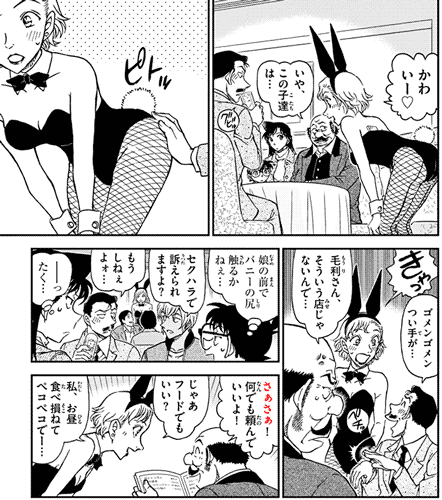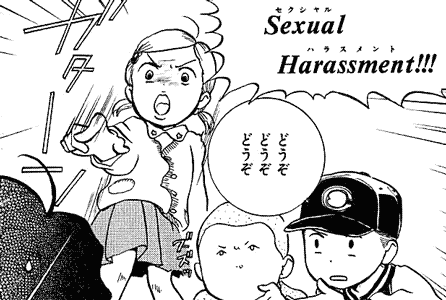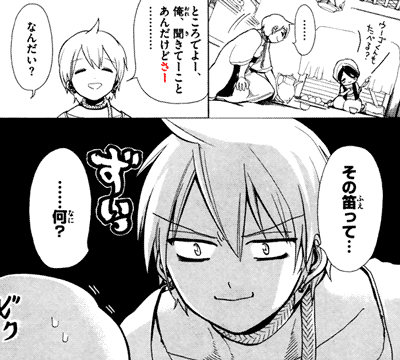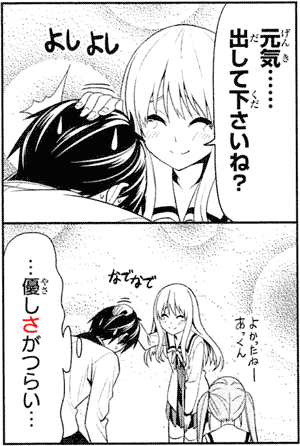In Japanese, sa さ can mean various things: it can mean "I don't know;" it can be used to insert a pause mid-sentence; it a sentence ending particle used to clarify something; it can be used to invite people to do things; it's a suffix used to create "~ness" nouns out of adjectives; among other uses. It's sometimes pronounced with a long vowel, as saa さぁ or さー.
Usage
Some of the various usages of sa さ appear related, while others do not, so while this article is all about sa さ, it's likely we'll be talking about multiple, different sa's that have nothing to do with each other.
In particular, sa さ can be pronounced with a long vowel in some cases, spelled saa さぁ or saa さー, but not in all cases: it's possible in the attention-calling usage, but not in the sa-form usage, so these two usages must be different sa's.
At Sentence Start
"I Don't Know"
When saa さぁ is used alone in a sentence, it usually means "I don't know," but it's only used when responding to someone, so it's like if a shrug was a word. For example:
This is an interjection, and can be accompanied with the actual verb for "I don't know," shiranai:
- Context: where is he?
- saa, shiranai
さあ、知らない
*shrugging interjection,* [I] don't know.
For the record: although sappari さっぱり can also mean "I don't know," "I have no idea," among other things, it likely has nothing to do with the sa さ of this article.
Inviting Interjection
A sa さ or saa さぁ at start of a sentence can be used when the speaker invites or urges the listener to do something. This includes "inviting" them to do some explaining about something wrong they did.
For example:(デジタル大辞泉:さ)
- sa, yarou
さ、やろう
Alright, let's do [it].- yarou - volitional form of yaru やる, "to do."
- sa, dou shite-kureru
さ、どうしてくれる
Well now, [how are you going to repay me]?- Literally asking "what will [you] do for [me]." Expression typically used after someone does something that makes the speaker angry (e.g. breaking one of their possessions), and they then ask how is the culprit going to amend that.
There are various ways to translate this.
It works kind of like "come on" in "come on, do it." What's the difference between "come on, do it" and just "do it"? It's only there to urge the listener. The word sa さ is used similarly, but it's also used in situations where we wouldn't use "come on" in English.
- Context: you offer someone a drink.
- saa, nonde-mite
さぁ、飲んでみて
Now, try drinking [it]. - Context: you ready your fighting stance. You're about to fight a challenger.
- saa, kakatte-koi
さぁ、かかってこい
Come on, [bring it].- kakaru 掛かる - "to make fall [on someone]." Used in all sorts of ways, such as "to use a technique [on someone]."
- kakatte-kuru かかってくる - "to come [toward me] use [some fighting technique] on [me]."
- Context: a genius detective whose body has reverted to a child for reasons is brought to a club featuring bunny girls in order to investigate a crime. One of the bunny girls mistakes him for the child of a regular customer.
- kawaii ♥
かわいー♥
[He] is a cutie ♥. - iya, kono ko-tachi wa...
いや、この子達は・・・
[You've got it wrong], these children [are]... - pito'
ピトッ
*sound effect for contact.* - kya'
きゃっ
*shriek* - gomen gomen tsui te ga...
ゴメンゴメンつい手が・・・
Sorry, sorry, [my] hand just... (did it on its own, without thinking.) - Mouri-san, souiu mise jainai-n-de...
毛利さん、そういう店じゃないんで・・・
Mouri-san, [this] isn't that sort of establishment...- It's a restaurant with bunny girl waitresses, not anything lewder.
- peki'
ペキッ
*slapping [his own hand]* - musume no mae de banii no shiri sawaru ka nee...
娘の前でバニーの尻を触るかねぇ・・・
[You'd] touch a bunny [girl]'s butt in front of [your] daughter, [huh]... - sekuhara de uttaeraremasu yo?
セクハラで訴えられますよ?
[You're going to] get sued for sexual harassment, [you know]? - mou shinee yoo...
もうしねぇよォ・・・
[I] won't do [it] again... - ttaku...
ーーったく・・・
[Good grief]... - saa saa! nandemo tanonde ii yo!
さぁさぁ!何でも頼んでいいよ!
saa, saa, [you] can order anything!- I'm not even sure what you'd say instead in English. "Now, now"?
- jaa fuudo demo ii?
じゃあフードでもいい?
Even food? (as opposed to alcohol.) - watashi, ohiru tabe-sokonete pekopeko dee...
私、お昼食べ損ねてペコペコでー・・・
I didn't eat lunch so [I'm starving]...- pekopeko is an ideophone for being hungry.
- ~sokoneru is an auxiliary verb meaning "to fail to," "to miss." In this case, to fail to eat lunch, to miss the chance to eat lunch.
A word used similarly is douzo どうぞ. It's used when telling other people it's fine for them to proceed doing something.
- Context: as per village custom, a village official has to tell an old tale to the village children. He warns the tale contains rather mature scenes. The children react:
- sekushuaru harasumento!!!
SEXUAL HARASSMENT!!!
[That's] sexual harassment!!! - douzo douzo douzo
どうぞどうぞどうぞ
[Go on, go on, go on].- douzo - suit yourself, go on, do as you please, etc., used when telling someone you don't mind if they proceed with something, in this case, to proceed with the story..
Attention-Caller
Sometimes, sa さ is used to insert a pause to call for the listener's attention, similar to saying "you see," or "you know" in English in the middle of sentences. For example:(デジタル大辞泉:さ)
- demo sa, boku wa sa, wakatteru-n-da
でもさ、ぼくはさ、わかってるんだ
?But, you see, I, you see, understand [it]. - sore ga sa, dou-mo okashii-n-da
それがさ、どうもおかしいんだ
That, you see, is weird somehow.
As you can see above, replacing sa by "you see" in English can sound weird, specially considering you can have a bunch of sa's in a single sentence.
Normally, however, you only use up to one of these sa さ per sentence. Using multiple inserts too many pauses, after all.
This sa is an interjection, and you can get a sentence of same meaning by removing it:
- demo boku wa wakatteru-n-da
でもぼくはわかってるんだ
But I understand it.
But I get it. - sore ga dou-mo okashii-n-da
それがどうもおかしいんだ
That's weird somehow.
That's weird for some reason.
There's something off with that.
This sort of usage is sometimes called a filler word, or hesitancy marker, because it inserts a small pause in the sentence that the speaker may use to quickly organize his thoughts and figure out what to say next.
The ne ね and yo よ particles works also have this sort of usage, but each has a different nuance, so, for example, the sort of character that would use sa さ or ne ね wouldn't use yo よ, and vice-versa.
- demo ne, boku wa ne
でもね、ぼくはね - demo yo, ore wa yo
でもよ、オレはよ
It's hard to explain the difference between them, but the image is basically as follows:
- yo - the speaker alerts the listener of something.
- sa - the speaker throws an explanation at the listener.
- ne - the speaker calls for the listener's attention while making sure they're listening.
Typically only assertive characters interject with yo, e.g. delinquent characters, like Okuyasu and Narancia from JoJo. On the other hand, ne is more cautious, and sa is somewhere in the middle, I guess.
Note that they all call for the listener's attention, so they're not used only to insert a pause, like eeto ええと, "erm," would, for example.
Observe that these particles come after marking particles, not before:
- kore wa sa
これはさ
This, you see.- Similarly: kore wa ne これはね, kore wa yo これはよ.
- *kore sa wa
これさは
- Similarly: *kore ne wa これねは, *kore yo wa これよは.
- sore de sa
それでさ
With that, you see.
And then, you see.- Similarly: sore de ne それでね, sore de yo それでよ.
- *sore sa de
それさで
- Similarly: *sore ne de それねで, *sore yo de おれよで.
As a general rule, the sa さ interjection only comes right after the first thing in the sentence, and it would sound weird if it came at the end of the sentence instead.
That's because in Japanese the first thing is typically the most important thing, usually the topic (marked by wa は or tte って) or subject (marked by ga が), the thing you're talking about, so sa さ brings attention to it.
You wouldn't use it to break auxiliaries, as they come at sentence-end—you wouldn't break the ~te-iru ~ている form to insert sa さ between ~te and ~iru, for example.
- Tarou wa tabete-iru
太郎は食べている
Tarou is eating. - *Tarou wa tabete sa iru
太郎は食べてさいる
Note: sae さえ is a different particle that can be used in this case: tabete sae iru 食べてさえいる, "[he] is even eating."
Similarly, you don't separate the adverbial copula from an eventivizer, which would be at sentence end, e.g. you don't separate ~ni naru ~になる:
- ore wa {kaizoku-ou ni} naru!
俺は海賊王になる!
I'll become {king of pirates}! - *ore wa {kaizoku-ou ni} sa naru!
俺は海賊王にさなる
Exceptionally, the interjection can come in the middle of sentences when it's after a conjunction.
For example, a conjunction that means "however" or "but," such as da kedo sa だけどさ, da ga sa だがさ, and so on.
- Context: inside Aladdin's flute lives in a genie called Ugo.
- Uugo-kun mo taberu?
ウーゴくんもたべる?
Ugo-kun, too, will eat? (he's asking Ugo if he wants to eat, too.) - ......
- tokoro de yo~, ore φ {kikitee} koto anda kedo saa............
ところでよー、俺、聞きてーことあんだけどさー・・・・・・・・・・・・
By the way~, I, have something [that] {[I] want to ask [you]}, [you know]............- kikitee - contraction of kikitai 聞きたい, "to want to hear," "to want to ask," tai-form of kiku 聞く.
- anda kedo - contraction of aru-n-da kedo あるんだけど, aru no da kedo あるのだけど.
- nandai?
なんだい?
What is [it]? - sono fue tte... ...... nani?
その笛って・・・・・・・・・何?
That flute......... is what?
What is that flute?
This sa さ may end up at the end of a sentence due to it being an incomplete sentence. For example:
- Context: girls get together.
- so, sore de saa
そ それでさぁ
[And, and you see].- sore de
それで
And then. After that.
With that. Given that. (used to continue a conversation.)
- sore de
- tsuide ni kikitai-n-dakedo...
ついでに訊きたいんだけど・・・
[There's something] [I] want to ask, [since we're at it].- tsuide ni
ついでに
Incidentally. Since we're at it.
- tsuide ni
- ko, kokuhaku tte minna nara doo yatte suru?
こ 告白ってみんなならどーやってする?
Confessing [to someone you love], how would [you] do [it] if it were [you]? - etto... watashi no tomodachi de kokuhaku suru noni nayandete saa
えっと・・・私の友達で告白するのに悩んでてさ~~
Erm... my friend is having trouble confessing [and that's why I'm asking you], [you see]~~ - boribori
ぼりぼり
*munch munch* - ho'hoon
ほっほ~~ん
(A Santa laugh-like sound, typically used when examining something intriguing.) - souiu koto... ka
そういうコト・・・か
[That's how it is, huh.] - naruhodo... ne
なるほど・・・ね
[Oh, I see.] - nante beta na...
なんてベタな・・・
What a clichéd... [thing to say.]
Above, in nayandete saa, the sa particle appears to be at the end of the sentence, right after nayandete. However, this only happens because the sentence was cut short.
The sentence doesn't make sense by itself, without the context provided by the previous sentence. To make sense, something would have to go after nayandete, e.g.:"my is having trouble confessing and..." sought my help, and that's why I'm asking you, or something like that.
At Sentence End
The sa さ sentence-ending particle can be used in various ways.
Like the ka か particle, it replaces the da だ copula. That is, if you'd say (something) da 〇〇だ, you say (something) sa 〇〇さ, not ~da-sa ~ださ.
This includes no da のだ being replaced by no sa のさ.
Believe Me
When you think someone doesn't believe what you're saying, or that you can do something, the sa さ particle can be used to instill confidence. Trust me, bro, you'll see:
- Context: someone doesn't believe you can win a fight.
- ore wa katsu sa
俺は勝つさ
I'll win, [you'll see].
I'll win, [trust me]. - Context: someone doesn't believe you're serious.
- ore wa honki sa
俺は本気さ
I'm serious.
In many cases, it would be hard to translate this sa さ into anything, so it doesn't make it into the English translation..
- Context: someone doesn't believe you believe them.
- shinjiru sa
信じるさ
[I] believe [you]. - Context: someone doesn't believe you can play dodgeball with a celestial object.(Anime: Diebuster!, Episode 5)
- jinrui ni sonna koto wa fukanou da!
人類にそんなことは不可能だ!
To the human race something like that is impossible! - φ dekiru sa! Nono to issho nara nandatte dekiru!
できるさ!ノノと一緒ならなんだってできる!
[I] can do [it]! If [I] am with Nono, [I] can do anything!- φ dekiru - a suru-verb whose verbal noun is a null anaphoric pronoun (instead of coming after a noun, suru comes after nothing, but this nothing refers to something previously mentioned): sonna koto wa dekiru sa そんなことはできるさ, "[I] can do something like that."
- nandatte dekiru - same meaning as nandemo dekiru 何でもできる, "can do whatever [it] is," "can do anything."
This can also be used in a more explanatory tone, when doing something results in something else:
- Context: someone doesn't believe he can pass an exam.
- benkyou sureba ukaru sa
勉強すれば受かるさ
If [you] study, [you] will pass [the exam], [you'll see]. - renshuu sureba {{dekiru} you ni} naru sa
練習すればできるようになるさ
If [you] practice, [you] will become {in a way [that] {can do [it]}}.
If [you] practice, [you] will become able to do [it].- {~you ni} naru - stative verb eventivization.
Just like as an interjection, sa, yo, and ne can all be used as sentence-ending particles, each with a different nuance.
Simplifying Things
If someone is confused about something, or overcomplicating things, the sa さ particle can be used to clear up things while providing a simpler perspective.
For example:(デジタル大辞泉:さ)
- {{suki na} you ni} yareba ii no sa
好きなようにやればいいのさ
[You] should just do {[as you like]}.- Just do what you want, that should work.
- {sou shinpai suru} koto wa nai sa
そう心配することはないさ
Something [that] {[you] worry that much} is nonexistent. (literally.)
There's nothing for you to worry that much.
There's no need to worry so much about it, you see.
Another example:
- kitto daijoubu sa
きっと大丈夫さ
I'm sure [it] is alright.
I'm certain nothing bad will happen.
Demonstrating Things
It's possible to use sa さ with demonstrative pronouns when clearing up what something is by literally demonstrating it or pointing at it. For example:
- Context: while moving around, a character tells the story about a certain legendary place. Confused, the listener asks what that has to do with anything. The character answers:
- sore wa koko sa
それはここさ
That's here, you see. - Context: someone doesn't know how to use a thing.
- See also: kou, sou, aa, dou こう, そう, ああ, どう.
- sore wa dou yatte tsukau?
それはどうやって使う?
About that: what does [one] do to use [it]?
How does [one] use that?
How do [you] use that? - kou yatte tsukau no sa!
こうやって使うのさ!
[You] use [it] like this!
Explanatory Quoting
The sa さ particle can come after the quoting particles to と and tte って to form to-sa とさ, tte-sa ってさ. This is used when pointing out what someone said.
For example:(デジタル大辞泉:さ)
- {mukashi-mukashi, {take-tori no okina to iu} roujin ga ita} to sa
昔々、竹取の翁という老人がいたとさ
[Someone said that] {long, long ago, there was an elder {called the bamboo-taking old man}}, you see.- take-tori - bamboo-taking, as in someone who "takes bamboo," take wo toru 竹を取る. A bamboo-cutter.
- Here, someone points out a tale of a certain old man. Most likely, they're pointing out that such tale exists at all, e.g. "why are you talking about bamboos all of sudden?" "Well, because people say that there was this bamboo-cutting old man in the past, that's why."
- {kare mo iku-n-desu} tte sa
彼も行くんですってさ
[Someone] [said] that {he will go, too}, you see.- Here, person A points out to person B that person C said that person D will go somewhere, too.
- e.g. John isn't sure if Paul will go to the party, so Mary points out to John that Rose said Paul will go, too.
This is similar but different to ~rashii ~らしい.
Typically, ~rashii is used when telling something you've heard from someone else, so one should take it with a grain of salt, assuming the possibility it may not be true.
- mukashi take-tori no okina to iu roujin ga ita rashii
昔竹取の翁という老人がいたらしい
I heard that in the past there was an elder called bamboo-taking old man.- I don't know if it's true or not, it's just what I heard.
Meanwhile, when ~to-sa or ~tte-sa are used, whether the story is true or not is irrelevant. The fact is that it exists, and that its existence explains something, e.g. I only mentioned bamboos because this bamboo-related story exists, it doesn't matter if it's a fictitious legend.
Demanding Clarification
The sentence-ending sa さ can also be used in questions, in particular when what someone said or did feels wrong to you and you're reprimanding them.
For example:(デジタル大辞泉:さ)
- iku tte, doko e iku no sa
行くって、どこへ行くのさ
"Go"? Go where?- Here, someone said they're going, and the speaker demands to know where, as they probably shouldn't be going anywhere. Alternatively, the listener told the speaker to go, but the speaker isn't aware of anywhere they should be going to.
- otoko no kuse ni nani sa
男のくせに何さ
[So what if I'm a guy]?- Here, the speaker is quoting something someone said about them: otoko no kuse ni.
- otoko means "man," "guy," "boy," "male," etc.
- The phrase X no kuse ni is used when complaining about someone's behavior given that they are an X, e.g. a guy can't open a pickle jar, otoko no kuse ni yowai 男のくせに弱い, "[you] are weak for a guy," or "weak despite being a guy," in the sense that guys are strong, and you, being a guy, should be, too.
- In this sentence, someone likely complained about something the speaker did because he was a guy, and the speaker rebutted by asking "so what if I'm a guy?" I can't do this just because I'm a guy?
- Alternatively, someone is complaining about a third person, and the speaker asks "so what if he is a guy?"
- doushite damatte-iru no sa
どうして黙っているのさ
Why are [you] quiet?
This sort of usage, specially the last example above, can occur in songs sung from a male perspective.
That is, regardless of whether the singer is male or female, when the lyrics tell a story from a guy's point of view, you may get a sa さ here and there.
Likely this occurs because this sa さ calls for the listener's attention, and in love songs you'll probably have a male character assertively approaching a female one. For example:
- saa, namida φ fuite, boku wo mite
さぁ涙拭いて僕を見て
Come on, wipe [your] tears, then look at me. - doushite damatte-iru no sa
どうして黙っているのさ
Why are [you] silent? - kimi no kimochi wa wakatteru
君の気持ちはわかってる
[I] understand your feelings. - {hagayui} omoi wa onaji sa
はがゆい思いは同じさ
The feeling {of impatience} feeling is the same.
I also feel impatient.
- ha-gayui 歯痒い, "tooth-itchy (literally)," refers to being vexed, irritated by something not going the way you want, making you grow impatient.
- Lyrics: Kimi ga Ita Kara 君がいたから, "because you were [there]," by Shounen-tai 少年隊.[lyrics source: mojim.com, accessed 2021-11-15.]
~ness
Main article: sa-form.
A sa さ suffix suffixed to adjectives forms the so-called sa-form, sa-kei サ形, which translates to English as the ~ness suffix, or the ~ity suffix. Observe:
- kawaii
かわいい
[It] is cute. - kawai-sa
可愛さ
Cuteness. - shinpuru da
シンプルだ
[It] is simple. - shinpuru-sa
シンプルさ
Simplicity. - watashi wa {un ga nai}
私は運がない
{Luck is nonexistent} is true about me.
I don't have luck. - un no na-sa
運の無さ
The nonexistentialness of luck.
The lack of luck.
Unluckiness.
- Context: Akkun あっくん, who doesn't have friends, makes his first friends.
- genki...... dashite kudasai ne?
元気・・・・・・出して下さいね?
[Cheer up,] okay? - yoshi yoshi
よしよし
[There there]. - yokatta nee Akkun
よかったねーあっくん
[Isn't that great,] Akkun. - nadenade
なでなで
*pat pat*
- naderu
撫でる
To pat. To caress. - See also: head pat.
- naderu
- ...yasashi-sa ga tsurai...
・・・優しさがつらい・・・
...kindness [hurts]...
See the article about the sa-form for details and more examples.
Prefix
A handful of words start with sa~ さ~ and share some meaning in common. For reference:(日本国語大辞典)
- In temporal words, sa~ 再~ means "the one after," and comes before ~rai~ ~来~, the one to come, i.e. "the next," so sa-rai is "the one after the next."
- rai-getsu
来月
The next month. - sa-rai-getsu
再来月
The month after the next. - sa-rai-shuu
再来週
The week after the next. - sa-rai-nen
再来年
The year after the next.
- rai-getsu
- sa~ さ~ may mean "early," as in "young," though this seems to be used in words that already mean young by themselves.
- otome
乙女
Maiden. - sa-otome
早乙女
A young lady who works as a rice planter. Also synonymous with otome. - nae
苗
Seeling. - sa-nae
早苗
Rice seedling.
- otome
- sa~ may mean "May," "the fifth month," go-gatsu 五月.
- sa-tsuki
五月
The fifth moon of the lunar calendar. May. - sa-bae
五月蠅
Flies swarming during early summer - sa-midare
五月雨
Rain during early summer
- sa-tsuki
- sa~ is also found as a prefix in some other words where it doesn't seem to carry much meaning. Even then, it's possible that there's a small nuance between the word with sa~ and the word without.
- mayou
迷う
To lose one's way. To not know where to go (your destination). - sa-mayou
彷徨う
To wander around without destination. - kiri
霧
Fog. - sa-giri
狭霧
- mayou
Dialectal Direction Case Marker
In Tōhoku 東北 dialect, and historically in eastern Japan, sa さ is a case-marking particle similar to e へ or ni に, used to mark a direction. For example:(デジタル大辞泉:さ)
- oiwake no matsuya sa ikassharimashita
追分の松屋さいかっしゃりました
[I] went to the pine house of the forked road. (?)- ~ssharu ~っしゃる is a dialectal honorific suffix (sonkeigo 尊敬語).
- ikassharimashita is the past form of ikassharimasu いかしゃります, which is the polite form of ikassharu いかっしゃる, which is ~ssharu suffixed to the mizenkei 未然形 ika~ いか~ of the godan verb iku 行く, "to go," so ikassharimashita means itta 行った, "went."
- oiwake no matsuya ni itta
追分の松屋に行った - I'm not really sure if matsuya is a house made out of pine, a store that sells pine, or one store of the Matsuya foods restaurant brand, but that's not really important to understand the grammar of this sentence.
This sa さ is said to comes from a sama さま suffix that expresses direction(デジタル大辞泉:さ), as in ame ga yoko-sama ni furu 雨が横様に降る, "rain falls horizontally," it's falling sideways, in a horizontal direction. I think sakasama 逆さま, "upside down," could also be this suffix.
Archaic Third Person Pronoun
Apparently, sa さ could be used as a third person pronoun, like soitsu そいつ. For example:
- sa ga kami wo torite kanaguri otosamu
さが髪を取りてかなぐり落とさむ
Above, the phrase sa ga さが means the same thing as soitsu no そいつの, "of him/her/them," "their." The ga が particle here means the same thing as the modern no の.
See ga ヶ for details.
A translation to modern Japanese of the sentence above would be:(esdiscovery.jp, English translation mine)
References
- さ - デジタル大辞泉 via kotobank.jp, accessed 2021-11-05.
- さ - 日本国語大辞典 via kotobank.jp, accessed 2021-11-05.
- 『竹取物語』の原文・現代語訳20 - esdiscovery.jp, accessed 2021-11-30.





Thank you for writing these, always very informative and entertaining!
ReplyDelete